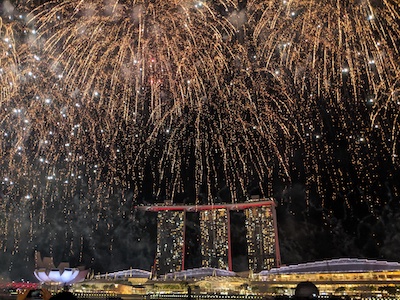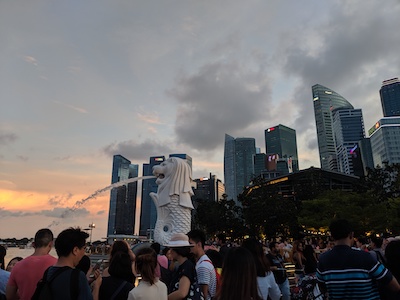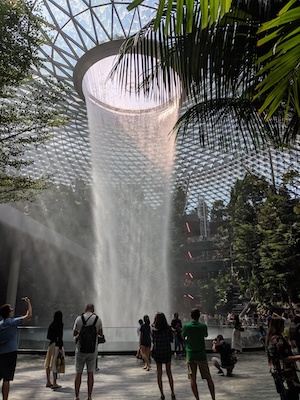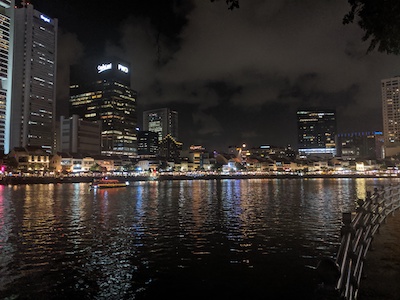July 14

I’m entering the last few weeks of my internship and things are starting to wind down. I’m beginning to finalize my report and am getting ready to head back to the US. I’ve been here for long enough that I’ve gotten used to some of the stranger things about life in Phnom Penh, like the traffic, and the lack of sidewalks, and the fact that after a heavy rainstorm the entire city smells strongly of sewer water.
I had a bit of a reality check last weekend though as I spent a few days in Singapore. Separated by the Gulf of Thailand and a two hour flight, the cities of Phnom Penh and Singapore couldn’t be more different. While Cambodia is on the path to becoming a modern, functional state, Singapore has had 50 years of stable development, and it shows. For a comparison, Singapore’s GPD per capita in 2017 was around US$57,000, while Cambodia’s was US$1,384 (and just to illustrate the difference a bit more, the US’s GDP per capita in 2017 was US$59,000, only a bit more than Singapore’s).

You would be forgiven for thinking I just traveled in time to 2100.
Much of Singapore’s development is due to the strong central planning of the city-state’s government. If you don’t know much about Singapore, you’ve probably at least heard of it as the city that’s outlawed spitting, chewing gum, and jaywalking, among other things. Less commonly mentioned are the restrictions on free speech, the relatively common use of corporal punishment in law enforcement, and their rather extensive surveillance state. The American in me has a lot of trouble accepting such restrictions, but the institutions that produced those rules also completely transformed Singapore into a global hub of commerce after the city gained its independence from the UK in the 1960s. You have to admit their methods get results.

Merlion Park at sunset.
I'm pretty sure it took more than banning jaywalking to build all this.
And apparently, the Singaporeans are quite happy with their system. The ruling party routinely wins elections with little opposition and there’s very little political unrest. Now, you could put that down to the fact that the government does impose quite severe speech restrictions on political activity, but in survey after survey, Singapore’s citizens report that they’re fairly satisfied with their current government. And really, why wouldn’t they be? They live in one of the safest, most well run cities on the planet, and many of them receive the benefits of a very generous social welfare system that provides many people with publicly funded housing, education, and healthcare.
Even knowing about some of the government’s more authoritarian tendencies, I loved Singapore. It’s filled with amazing architecture, both futuristic modern skyscrapers and old colonial neighborhoods, great food, and friendly people. The city has that same energy that you find in places like London or New York, the sense that you’re in a center of culture and commerce that the rest of the world turns towards. I really wouldn’t say that Singapore should act as a model for development for a place like Cambodia; their restrictions on certain rights just doesn’t sit well with my opinion on how a free society should run. Not to mention, their economic success is largely a matter of geographical luck, because the city is situated on a choke point of one of the busiest shipping lanes in the world. Still, Singapore is clearly doing something right, and I would like to think that in 2050 or 2070 Phnom Penh would be able to provide its citizens many of the benefits that Singaporeans enjoy today.

the waterfall in Changi Airport is what I mean.

In any case, it’s a great city and I had a very enjoyable weekend there. In the next blog, I’ll be back in Phnom Penh and really starting to wrap up my work with Open Development Cambodia. Stay tuned!